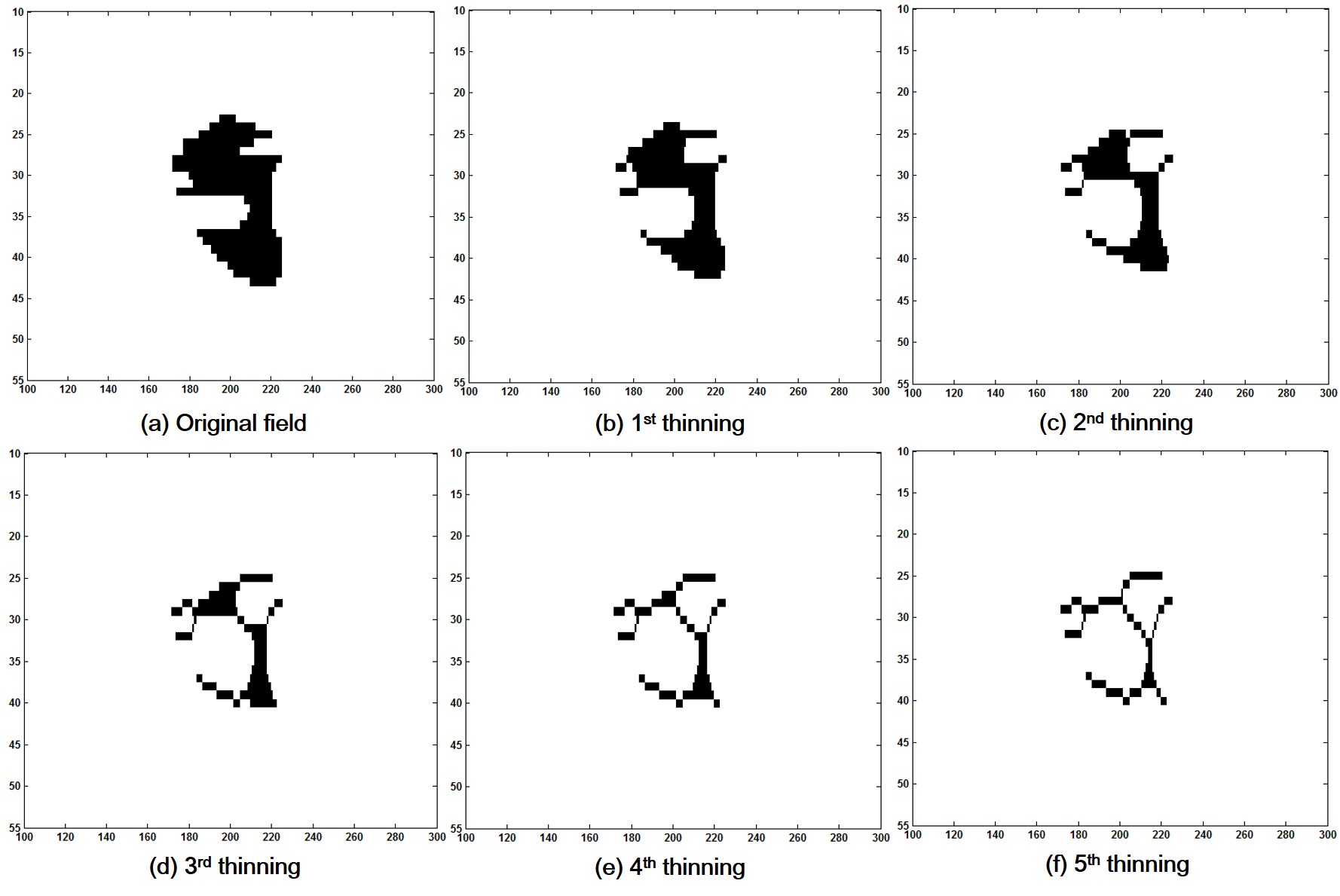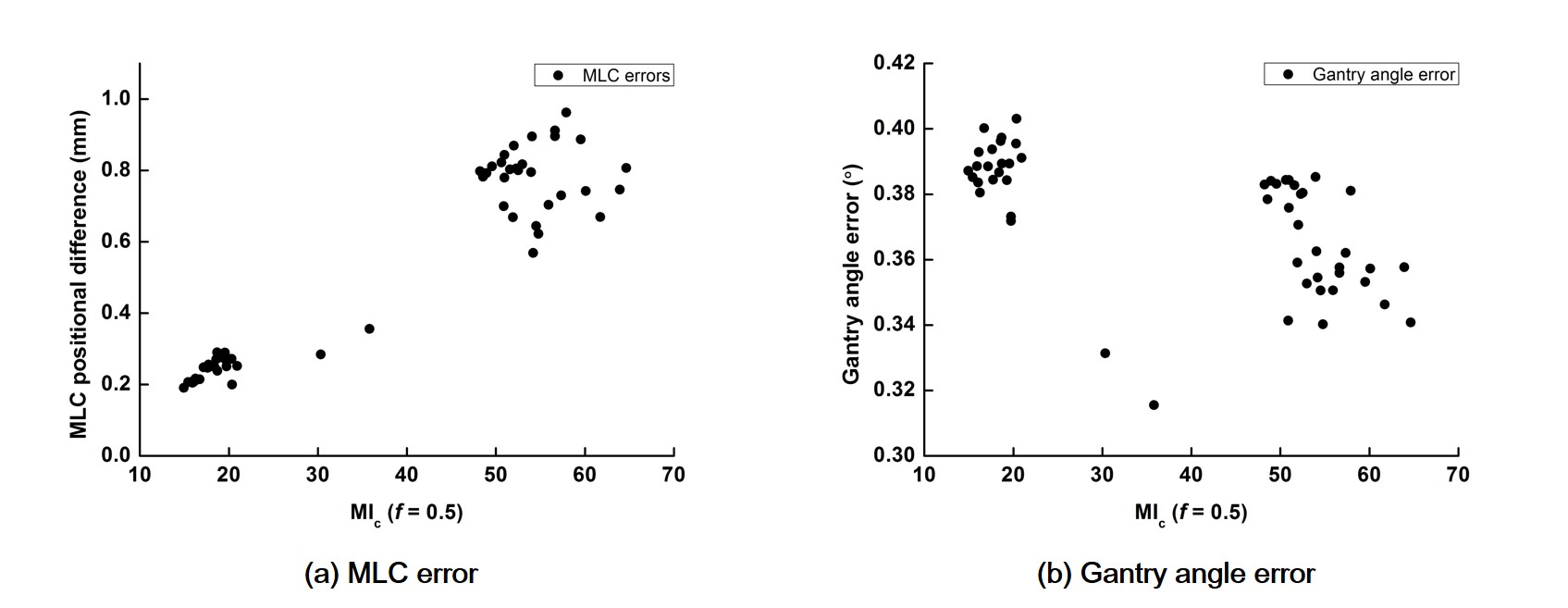글로벌 연구동향
의학물리학
 Modulation index for VMAT considering both mechanical and dose calculation uncertainties
Modulation index for VMAT considering both mechanical and dose calculation uncertainties연세대 / 박종민, 김형년*
- 출처
- Phys Med Biol
- 등재일
- 2015 Sep 21
- 저널이슈번호
- 60(18):7101-25. doi: 10.1088/0031-9155/60/18/7101. Epub 2015 Aug 28.
- 내용


AbstractThe aim of this study is to present a modulation index considering both mechanical and dose calculation uncertainties for volumetric modulated arc therapy (VMAT). As a modulation index considering only mechanical uncertainty of VMAT, MIt has been previously suggested. In this study, we developed a weighting factor which represents dose calculation uncertainty based on the aperture shapes of fluence maps at every control point of VMAT plans. In order to calculate the weighting factor, the thinning algorithm of image processing techniques was applied to measure field aperture irregularity. By combining this weighting factor with the previously suggested modulation index, MIt, comprehensive modulation index (MIc) was designed. To evaluate the performance of MIc, gamma passing rates, differences in mechanical parameters between plans and log files and differences in dose-volume parameters between plans and the plans reconstructed from log files were acquired with a total of 52 VMAT plans. Spearman's correlation coefficients (rs) between the values of MIc and measures of VMAT delivery accuracy were calculated. The rs values of MIc (f = 0.5) to global gamma passing rates with 2%/2 mm, 1%/2 mm and 2%/1 mm were -0.728,-0.847 and -0.617, respectively (p < 0.001). Those to local gamma passing rates were -0.765,-0.767 and -0.748, respectively (p < 0.001). The rs values of MIc (f = 0.5) to multi-leaf collimator and gantry angle errors were 0.800 and -0.712, respectively (p < 0.001). The MIc (f = 0.5) showed a total of 20 rs values (p < 0.05) to the differences in dose-volumetric parameters from a total of 35 tested cases. The MIc (f = 0.5) demonstrated considerable power to predict VMAT delivery accuracy showing strong correlations to various measures of VMAT delivery accuracy.
Author information
Park JM1, Park SY, Kim H.
1Department of Radiation Oncology, Seoul National University Hospital, Seoul, 110-744, Korea. Institute of Radiation Medicine, Seoul National University Medical Research Center, Seoul, 110-744, Korea. Biomedical Research Institute, Seoul National University Hospital, Seoul, 110-744, Korea. Center for Convergence Research on Robotics, Advanced Institutes of Convergence Technology, Suwon, 443-270, Korea.
- 연구소개
- 본 연구는 VMAT plan의 방사선세기변조 정도에 따른 기계적 구동 불확실성과 선량계산 불확실성을 정량화하여 실제 환자에게 전달되는 선량분포의 정확도를 예측하고자 진행된 연구입니다. 기존에 본 연구그룹에서 제안한 VMAT의 기계적 구동 불확실성 모델에 thinning algorithm을 이용한 선량계산 불확실성 모델을 결합하여 VMAT 변조 정도에 따른 불확실성을 종합적으로 평가할 수 있는 모델을 개발했습니다. Gamma evaluation 등의 현재 임상에서 사용되고 있는, 선량분포 전달 정확도를 평가할 수 있는 다양한 방법론의 결과 값과 본 연구의 모델을 이용한 변조정도 값에 대하여 상관관계분석을 통하여 본 연구 모델의 성능평가를 수행했습니다. 본 연구에서 제안하는 모델이 기존에 알려진 변조정도 평가 모델에 비해 가장 우수한 상관관계를 보임으로써 본 연구의 모델이 보다 정확히 선량전달 정확도를 평가할 수 있음을 보였습니다. 본 연구의 모델을 통하여 환자치료계획 단계에서 VMAT plan의 변조정도 평가가 가능하기 때문에 임상에서 환자특이적 정도관리에 소요되는 자원 소모를 줄이는 것에 도움이 될 것으로 기대합니다.
- 덧글달기









